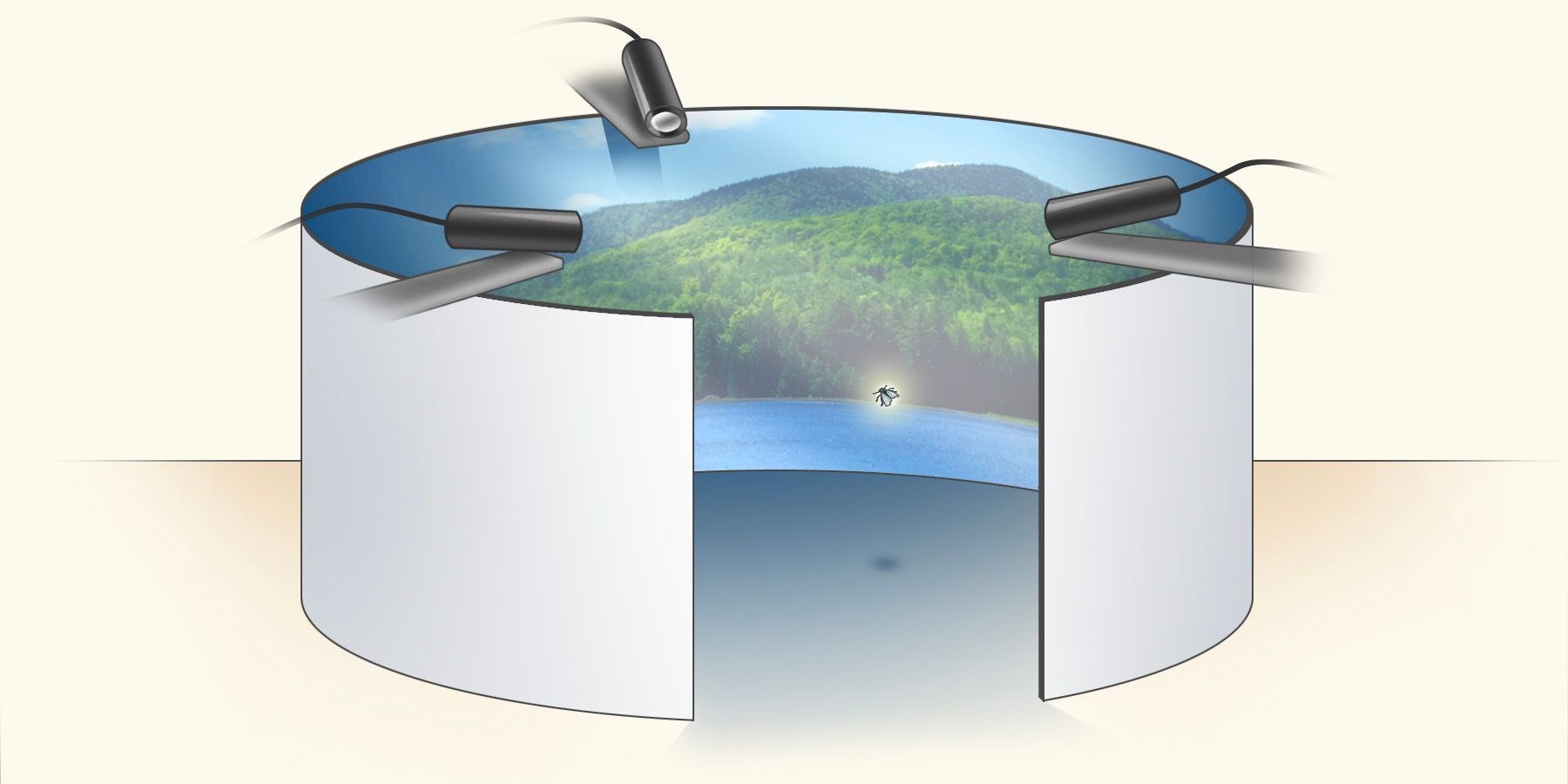ABOVE: © THOM GRAVES
Much of what is known about insect flight stems from experiments in which the organisms are tethered using thread, glue, or wire. In exchange for the control that these techniques offer, researchers have to contend with how they alter the natural behavior of the insects themselves. To truly study the animals in free flight, scientists have started marrying tools from across disciplines, creating unprecedented opportunities to observe insects on the wing.
Virtual reality arenas

How it works
Scientists use digital gaming technology to create realistic environments for animals inside an arena.
Pros
- Allows researchers to simulate different environments in the lab
- Let’s researchers manipulate stimuli virtually in ways that would be difficult/impossible in real life
Cons
- Still doesn’t entirely recreate natural environments
- Difficult to incorporate multiple sensory cues
- Difficult to study certain behaviors or larger species
Lab-on-cables

How it...
In a setup that is similar to the cameras used in sports stadiums, a central cube is controlled by a series of winches and cables to move around an insect as it flies.
Pros
- Can follow an insect’s unpredictable flight
- Can be used in the field
- Can be used to study larger species
- Doesn’t require cameras to be pre-positioned
Cons
- Costs a lot of money
- Has bulky equipment
- Requires advanced software to run and to analyze data
Radar

How it works
Weather radars or specially designed entomological radars track swarms of insects over vast distances.
Pros
- Tracks insects in their natural environment
- Provides data on swarm or individual behavior
- Can be deployed remotely
- Has useful ecological/economic/public health applications
Cons
- Cannot determine taxonomy directly (must be inferred or confirmed by field sampling)
- Costs a lot of money
- Produces noisy data
Read the full story.
Interested in reading more?







